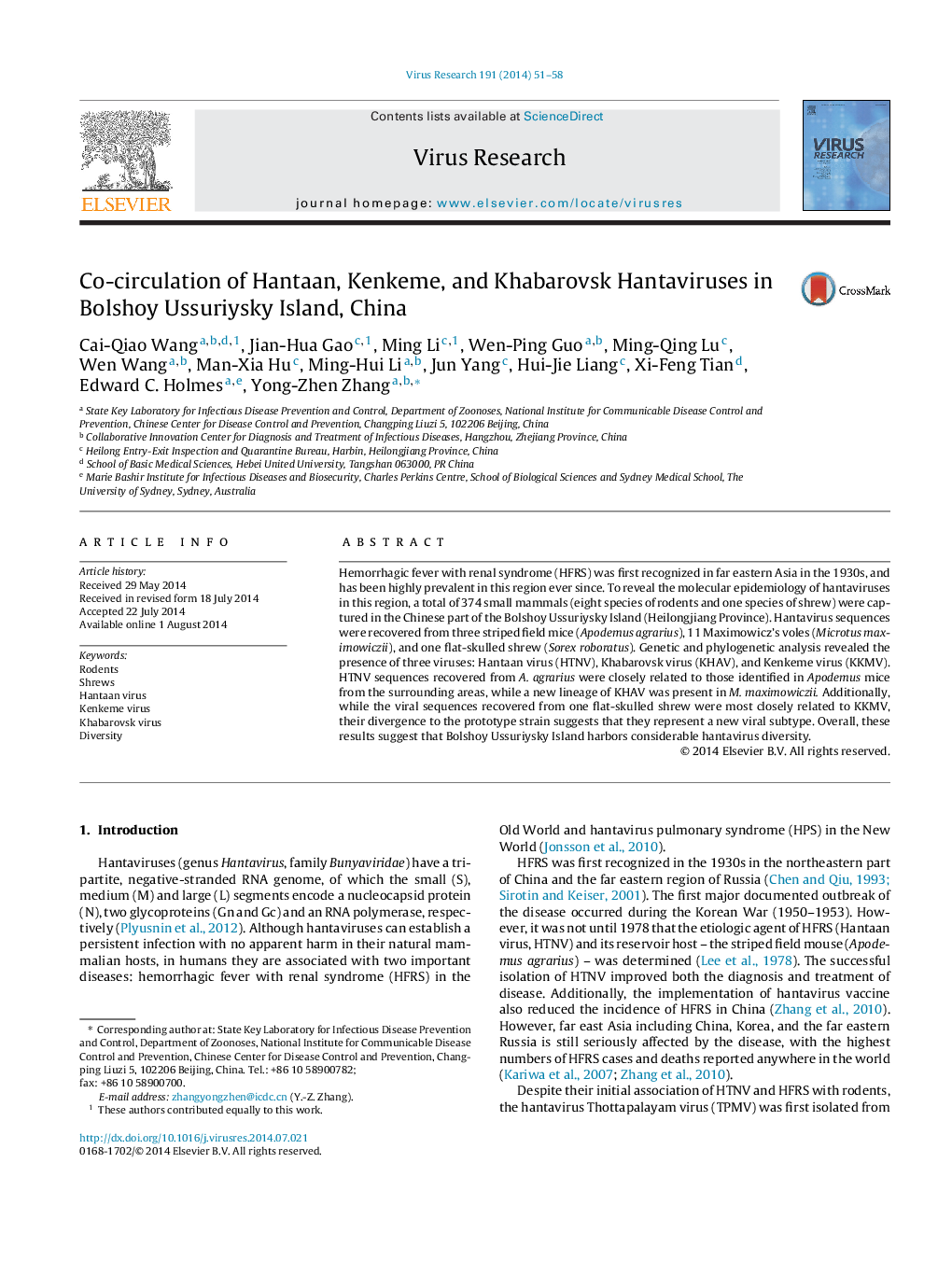| Article ID | Journal | Published Year | Pages | File Type |
|---|---|---|---|---|
| 6142337 | Virus Research | 2014 | 8 Pages |
Abstract
Hemorrhagic fever with renal syndrome (HFRS) was first recognized in far eastern Asia in the 1930s, and has been highly prevalent in this region ever since. To reveal the molecular epidemiology of hantaviruses in this region, a total of 374 small mammals (eight species of rodents and one species of shrew) were captured in the Chinese part of the Bolshoy Ussuriysky Island (Heilongjiang Province). Hantavirus sequences were recovered from three striped field mice (Apodemus agrarius), 11 Maximowicz's voles (Microtus maximowiczii), and one flat-skulled shrew (Sorex roboratus). Genetic and phylogenetic analysis revealed the presence of three viruses: Hantaan virus (HTNV), Khabarovsk virus (KHAV), and Kenkeme virus (KKMV). HTNV sequences recovered from A. agrarius were closely related to those identified in Apodemus mice from the surrounding areas, while a new lineage of KHAV was present in M. maximowiczii. Additionally, while the viral sequences recovered from one flat-skulled shrew were most closely related to KKMV, their divergence to the prototype strain suggests that they represent a new viral subtype. Overall, these results suggest that Bolshoy Ussuriysky Island harbors considerable hantavirus diversity.
Keywords
Related Topics
Life Sciences
Immunology and Microbiology
Virology
Authors
Cai-Qiao Wang, Jian-Hua Gao, Ming Li, Wen-Ping Guo, Ming-Qing Lu, Wen Wang, Man-Xia Hu, Ming-Hui Li, Jun Yang, Hui-Jie Liang, Xi-Feng Tian, Edward C. Holmes, Yong-Zhen Zhang,
